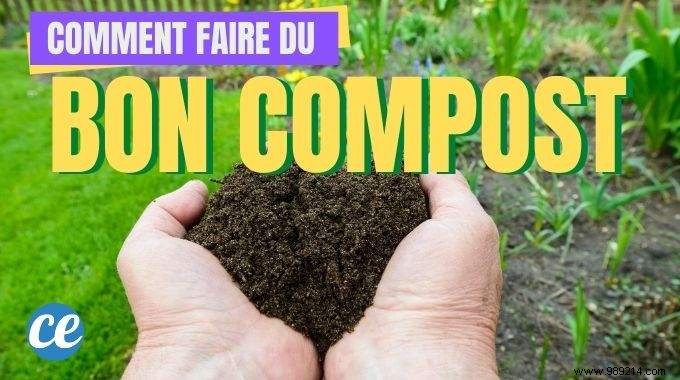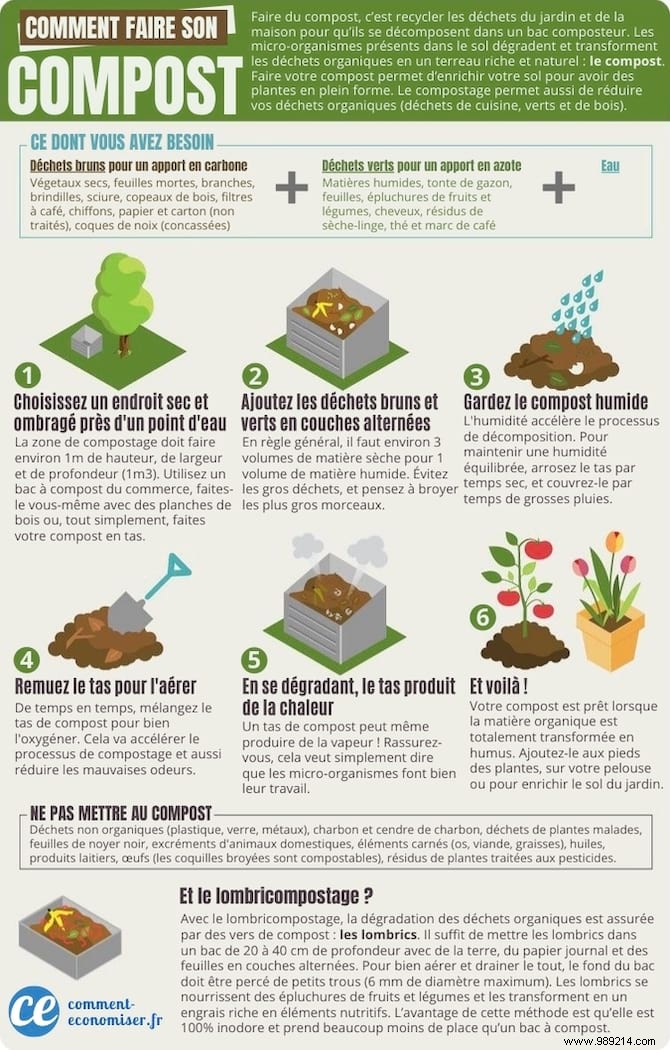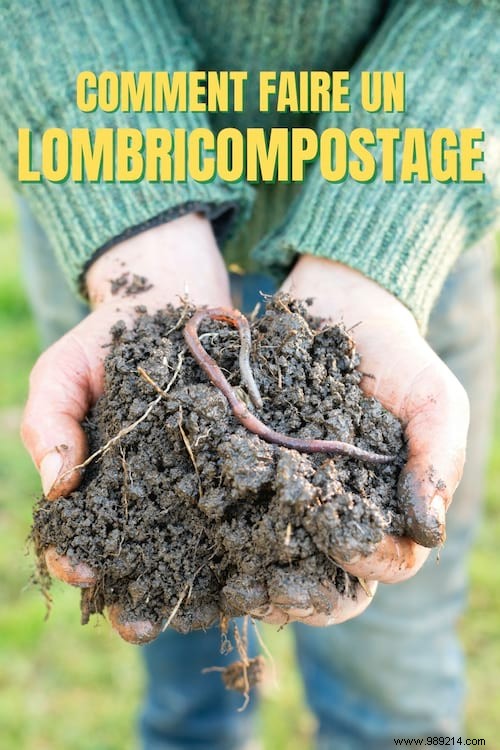
Composting is recycling garden and farm waste. home to decompose in a compost bin.
Afterwards, the micro-organisms present in the soil degrade and transform this organic waste into a rich and 100% natural soil:compost .
Thus, making your own compost enriches your soil to nourish your plants and make them healthier.
But that's not all ! Composting also allows you to reduce your waste organic waste (kitchen, green and wood waste) and to avoid transport to the recycling center.
But where to install the compost bin? And what waste to compost?
Here is the easy guide to start your compost even when you are a beginner :

Click here to easily print this guide in PDF.
- Brown and dry waste for a carbon supply: dead plants and leaves, dry branches and twigs, sawdust, wood chips, coffee filters, rags (cotton or wool), paper, newsprint and cardboard (untreated) and shells of nuts and hazelnuts (crushed).
- Green and wet waste for nitrogen supply: grass clippings, leaves, fruit and vegetable peelings, hair, dryer residue, tea and coffee grounds.
- Water
- Compost Bin (you can buy a compost bin like this or make it yourself with wooden planks like here.)

The composting area should be approximately 1m in height, width and depth (1m3). You can use a store-bought compost bin, make it yourself with wooden planks and chicken wire, or just make a compost heap.
As a general rule, it takes about 3 volumes of dry matter for 1 volume of wet matter. Avoid large waste and consider shredding larger pieces. Use a vegetable shredder to cut the waste into small pieces and facilitate the work of fermentation of microorganisms.
Humidity speeds up the decomposition process. To maintain a balanced humidity, water the pile in dry weather, and cover it in times of heavy rain.
Mix the compost heap to oxygenate it well. This will speed up the composting process and also reduce bad smells.
Warning: the first mixing should only be done 2 to 4 weeks after the waste has been piled. This way, you avoid lowering the temperature, which is beneficial to the activity of bacteria.
A compost heap can even produce steam! But rest assured, it just means that the microorganisms are doing their job well. Now all you have to do is wait.
And now, voila ! Your compost is ready when the organic matter is totally transformed into brown humus, which looks like compost and smells like forest soil. Add it to plants, on your lawn or as a supplement to enrich the soil in your garden.
Be aware that it takes between 3 and 5 months so that a compost is well decomposed and rich in humus.

Brown and dry waste (for carbon input):
- plants and dead leaves,
- dry branches and twigs,
- sawdust and wood shavings,
- coffee filters,
- rags (cotton or wool),
- paper, newsprint, cardboard (untreated)
- walnut and hazelnut shells (crushed).
Green and wet waste (for nitrogen supply):
- lawn mowing,
- sheets,
- fruit and vegetable peelings,
- hair,
- dryer residue,
- tea and coffee grounds.
- Inorganic waste (plastic, glass, metals),
- coal and coal ash,
- diseased plant waste,
- black walnut leaves and twigs,
- excrement of domestic animals,
- meat elements (bones, meat, fats),
- oils,
- dairy products,
- eggs (crushed, the shells are compostable),
- residues of plants treated with pesticides.

With vermicomposting, the degradation of organic waste is ensured by compost worms:earthworms.
Just put the earthworms in a container 20 to 40 cm deep and add soil, newspaper and leaves in alternating layers.
To ventilate and drain everything well, the bottom of the tank must be pierced with small holes (6 mm maximum diameter).
Earthworms feed on fruit and vegetable peelings and turn them into nutrient-rich fertilizer.
The advantage of this method is that it is completely odorless and takes up much less space than a large compost bin.
Have you tried this guide to make your own compost? Let us know in the comments if it worked for you. We can't wait to read you!